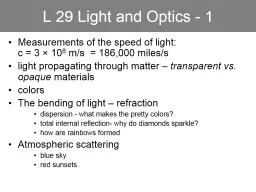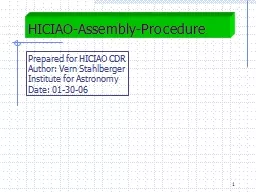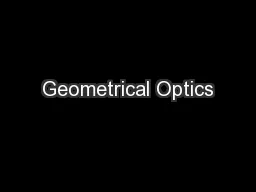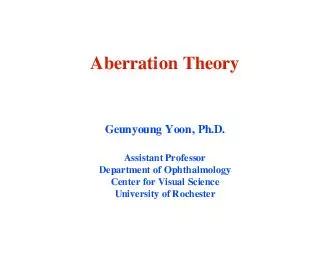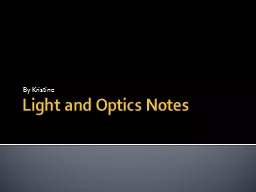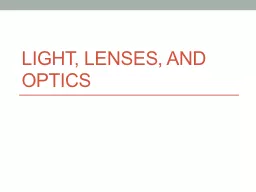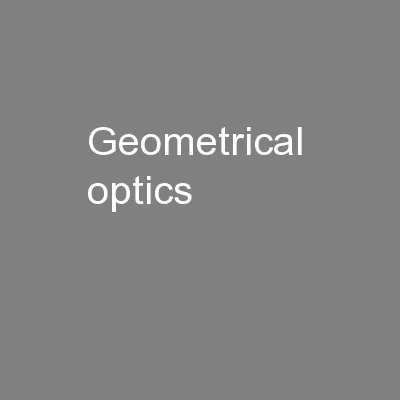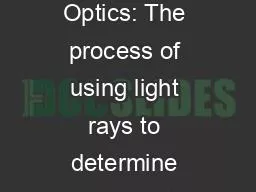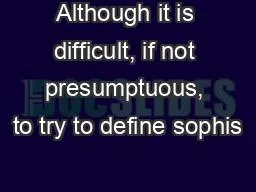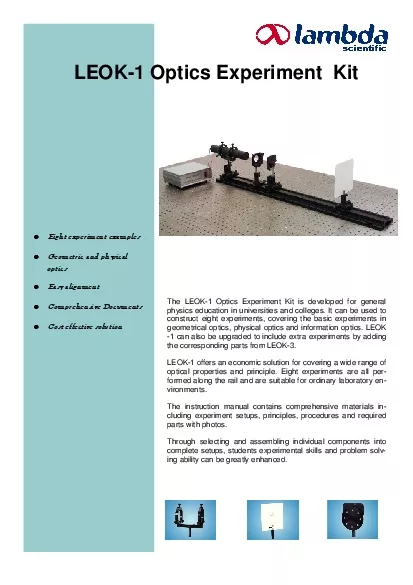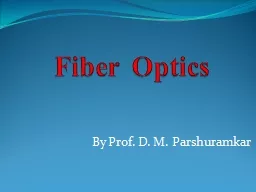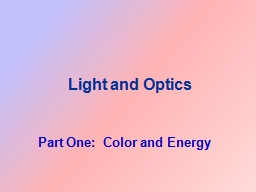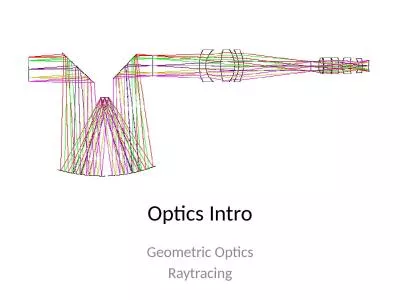PPT-L 29 Light and Optics - 1
Author : tatyana-admore | Published Date : 2017-10-19
Measurements of the speed of light c 3 10 8 ms 186000 miless light propagating through matter transparent vs opaque materials colors The bending of light
Presentation Embed Code
Download Presentation
Download Presentation The PPT/PDF document "L 29 Light and Optics - 1" is the property of its rightful owner. Permission is granted to download and print the materials on this website for personal, non-commercial use only, and to display it on your personal computer provided you do not modify the materials and that you retain all copyright notices contained in the materials. By downloading content from our website, you accept the terms of this agreement.
L 29 Light and Optics - 1: Transcript
Download Rules Of Document
"L 29 Light and Optics - 1"The content belongs to its owner. You may download and print it for personal use, without modification, and keep all copyright notices. By downloading, you agree to these terms.
Related Documents

